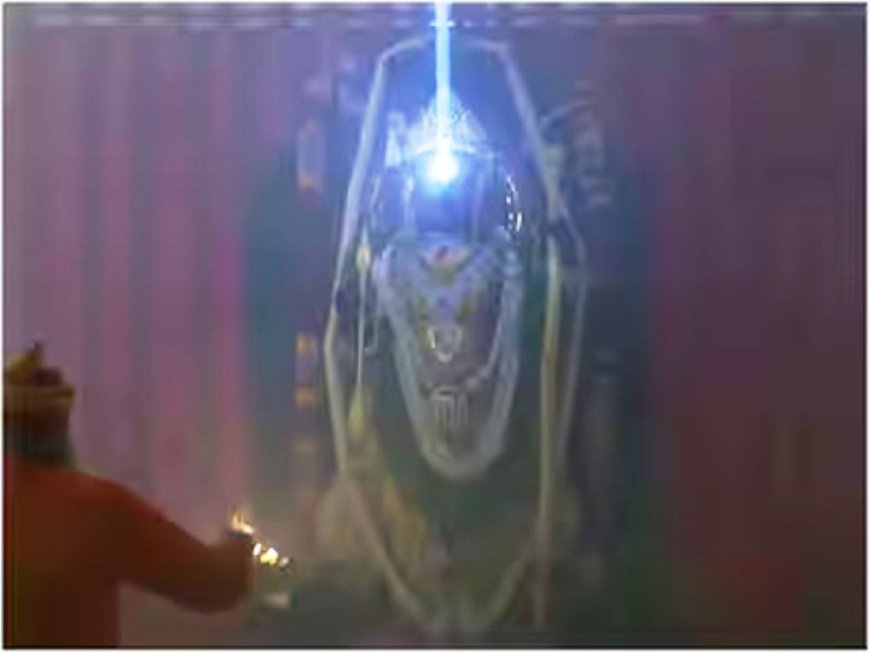'Surya Tilak' illuminates Ram Lalla's forehead
The Sun's rays fell on the forehead of Ram Lalla in the form of a 'surya tilak' at the Ram Mandir in Ayodhya on the occasion of Ram Navami on Wednesday.

At 12.01 pm, the Sun's rays graced Ram Lalla's forehead in Ayodhya's Ram temple in a mesmerizing show for around two to two-and-a-half minutes. The size of the tilak was around 5.8 cm. The event was projected on large LED screens placed in nearly 100 places across Ayodhya.
Using cutting-edge scientific expertise, a 5.8-centimeter beam of light hit the deity's forehead. To achieve this remarkable phenomenon, a specialized instrument was designed. A team of ten esteemed Indian scientists stationed at the Ram Mandir ensured the success of this auspicious event on Ram Navami. For around two to two-and-a-half minutes starting at 12 noon, sunlight was precisely directed onto the statue's forehead using a combination of mirrors and lenses.
Commissioned by the temple trust, scientists from leading government institutions devised a sophisticated apparatus consisting of mirrors and lenses. This mechanism, officially termed the 'Surya Tilak mechanism', marks a significant scientific and engineering feat.
The development of the 'Surya Tilak' mechanism involved collaboration between scientists from CBRI, Roorkee, and the Indian Institute of Astrophysics (IIAP), Bengaluru. Employing a special gearbox and using reflective mirrors and lenses, the team orchestrated the precise alignment of sunlight rays from the temple's third floor to the inner sanctum (Garbha Griha) using established principles of solar tracking. Technical support from the Indian Institute of Astrophysics and the manufacturing expertise of Optica, a Bengaluru-based company, further helped the project's execution.
The team from CSIR-CBRI includes Dr. SK Panigrahi, Dr RS Bisht, Kanti Solanki, V. Chakradhar, Dinesh, and Sameer. Prof. R. Pradeep Kumar, Director of CSIR-CBRI, mentored the project. From IIA Bangalore, Dr Annapurni S., Director of IIA, Er S Sriram, and Professor Tushar Prabhu are the consultants. Rajinder Kotaria, Managing Director of Optica, and his team, Nagraj, Vivek, and Thava Kumar, are actively involved in the execution and installation process.
A similar 'Surya Tilak' mechanism already exists in some Jain temples and at the Sun Temple at Konark, but they are engineered differently.
What's Your Reaction?



















































